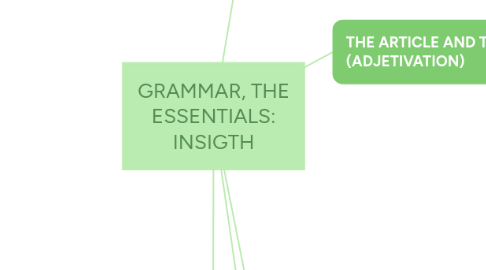
1. SPELLING CONVENTIONS AND ACCURACY
1.1. Tips
1.1.1. Avoid misspelle words
1.1.2. Careful screening for spelling errors
1.1.3. Use the given spelling rules consistently
1.1.4. Never use contractions in scientific texts
1.1.5. Capitalized words in science are either proper nouns, key words in titles, or first words of sentences
1.1.6. Define abbreviations the first time they appears. Then, use the abbreviation rather than the full term
1.1.7. Avoid abbreviation in titles and abstracts
1.2. To check the grammar, spelling and punctuation
1.2.1. Use a spellchecker
1.2.2. Use a Dictionary of Scientific Terms
1.2.3. Do not use a unnecessary commas
1.2.4. Proofread
2. TENSES AND CONCORDANCE
2.1. TENSES
2.1.1. Past tenses
2.1.1.1. Used mainly in the Methodology and Results sections.
2.1.2. Present tenses
2.1.2.1. Appropiate for accepted facts (Introduction and general findings).
2.1.2.2. May be applicable when you discuss your results, under certain conditions (Conclusion section).
2.1.3. Future tenses
2.1.3.1. Use to describe things that may happen in the future.
2.2. CONCORDANCE
2.2.1. Two essential parts are
2.2.1.1. SUBJECT
2.2.1.1.1. Refers to the person or thing responsible for the action.
2.2.1.2. VERB
2.2.1.2.1. Refers to the main action.
2.2.2. Subject can consist of a single word (a noun) or contain several words. Subject and verb need to agree in number.
3. THE ARTICLE AND THE NOUN (ADJETIVATION)
3.1. SINGULAR / PLURAL
3.1.1. The countable noun is
3.1.1.1. Singular: when you have only one instance of it.
3.1.1.2. Plural: when you have more than one instance of it.
3.2. DEFINITE / INDEFINITE
3.2.1. Definite: when is clear wich instance/s of an entity you are referring to.
3.2.2. Indefinite: when it is not clear with specific instance of an entity you are referring to.
3.3. COUNTABLE / UNCONTABLE
3.3.1. Using the articles:
3.3.1.1. Contable
3.3.1.1.1. Singular
3.3.1.1.2. Plural
3.3.1.2. Uncontable
3.3.1.2.1. Singular
3.4. USING THE ARTICLES: PROPER NOUNS
3.4.1. No articles before proper nouns.
3.4.2. Lakes do not take articles, ex. Lake Ontario.
3.4.3. Most countries do not take articles. Exceptions: The UK, The USA.
3.4.4. River, mountain ranges, seas, and oceans should be preceded by the article The, ex.: The Amazon River.
3.5. ADJETIVATION
3.5.1. Adjectives preceded nouns in English.
3.5.2. Adverbs preceded adjectives.
3.5.3. Qualifying adjectives must be avoid in scientific writing.
4. ENGLISH PASSIVES AND ACTIVES
4.1. FORMING THE PASSIVE
4.1.1. To form the passive: BE + PAST PARTICIPLE
4.1.2. Intransitive verbs can not use passive.
4.2. USING THE PASSIVE
4.2.1. When the subject is acted upon.
4.2.2. When the subject is the actor.
4.3. WHY PASSIVE VOICE
4.3.1. It lets the fact stand on their own.
4.3.2. Removes some accusations of bias.
4.3.3. Presents an "air"of logic.
5. CONNECTORS: COORDINATE AND SUBORDINATE SENTENCES
5.1. Conjunction to link ideas and information
5.1.1. COORDINATION: join terms that are equals, ex: and, or, for...
5.1.2. SUBORDINATION: show inequality or a relationship of dependence or limitation, ex: if, as, when, because...
5.1.3. Specialized linking words are powerful tools for pulling ideas together
5.1.3.1. Reinforcement
5.1.3.2. Change
5.1.3.3. Conclusion
